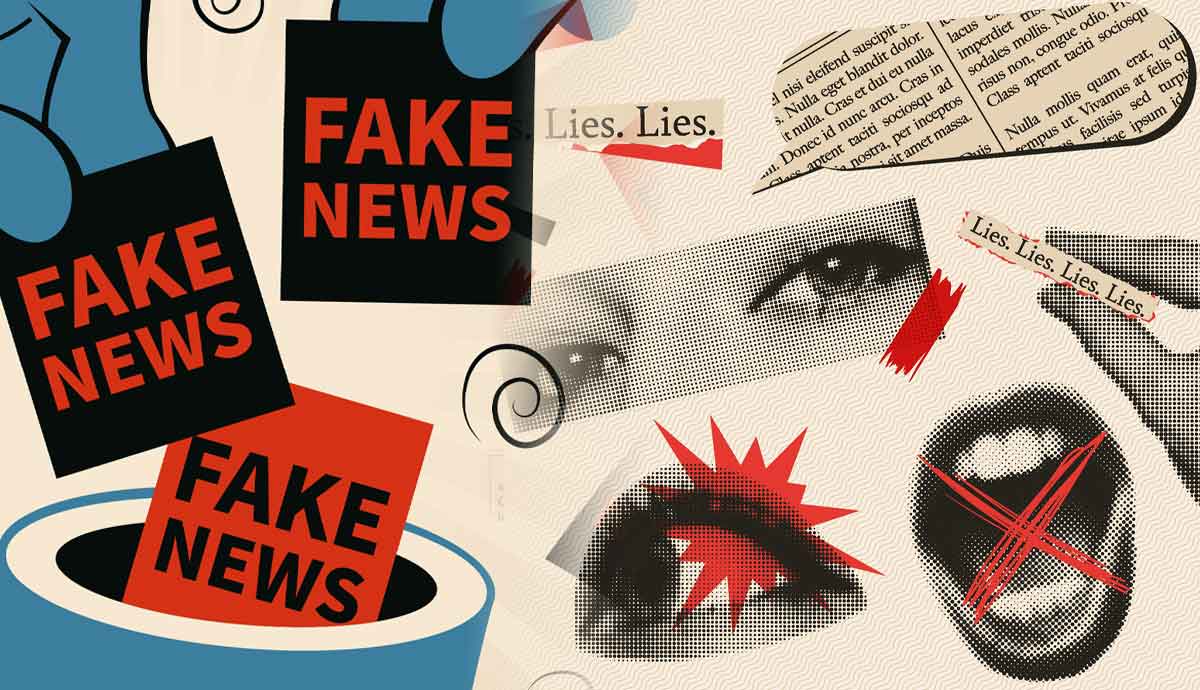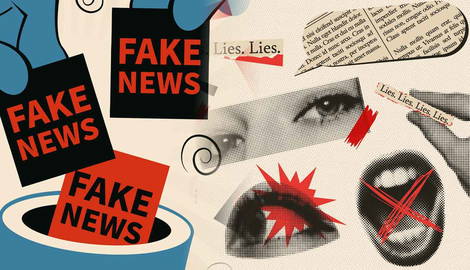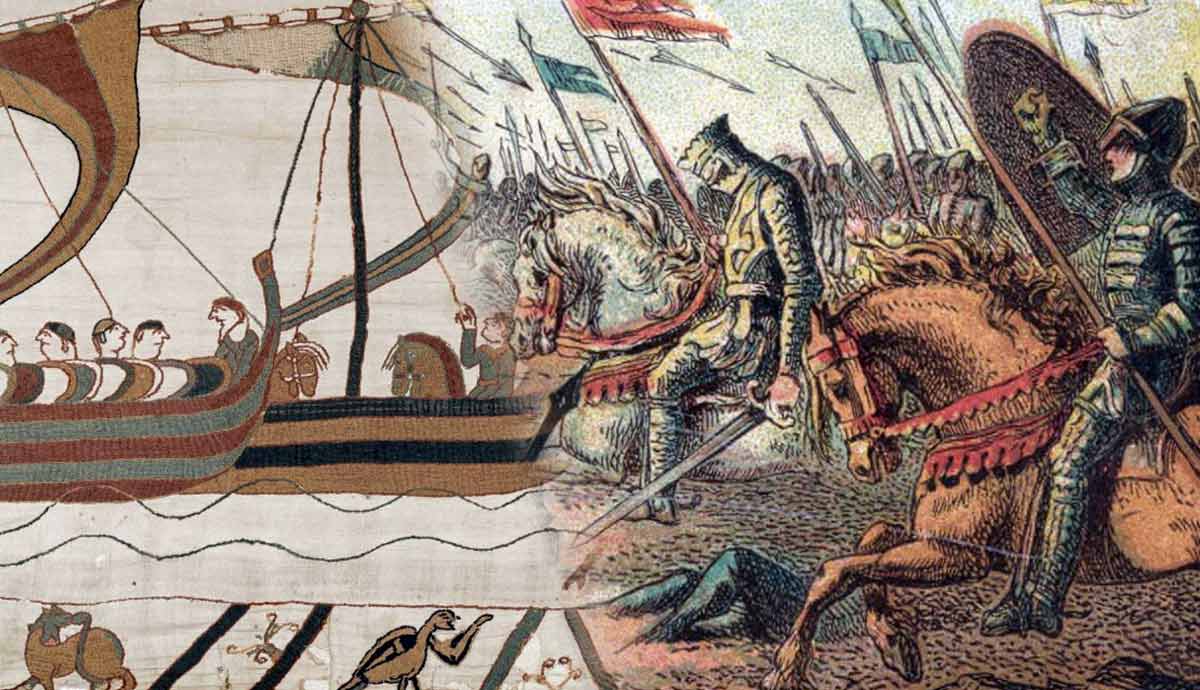
In today’s politically polarized world, the term “fake news” is relatively common. Many voters believe that some media outlets blatantly exaggerate, selectively report, or even outright lie in their journalism. How do media outlets engage in this biased reporting? Is modern technology helping reduce media bias, or can it make it worse? Are there any reasonable ways for voters to detect reporting that may be biased, exaggerated, incomplete, or even fraudulent? Finally, are media consumers themselves contributing to the problem? If so, how? Read on to explore the challenge of “fake news” in modern elections, how the trend arose, and what can be done about it.
Setting the Stage: Partisan and Penny Newspapers

Although we tend to think of “fake news” as a modern problem, the dilemma of biased news—sometimes ranging into the truly fraudulent—has been around for generations. Mass news consumption began in the 1830s when literacy began to increase, and technology allowed for cheaper printing of penny newspapers. These competed with newspapers printed by political parties, making them outright partisan by design. Both types of papers focused on increasing sales by printing the kind of news their customers wanted, meaning journalistic ethics were usually considered less important than sensationalism.
Penny newspapers quickly included editorials, or opinion articles, that were sometimes criticized as libelous. By the 1840s, penny newspapers had become dominant in big cities, where they could survive from advertising revenue rather than being subsidized by political parties. Partisan newspapers were more common in towns and rural areas. Though technology improved through the 1840s and 1850s, allowing rapid newspaper printing, papers remained relatively partisan and sensational, particularly regarding the Mexican-American War.
Gilded Age and Progressive Era: Yellow Journalism

While partisan presses declined after the American Civil War (1861-65), and penny newspapers became larger and more robust due to increased news consumption, media bias continued. The development of prominent, powerful newspapers led to their ability to shape the news rather than simply report it. This era of yellow journalism saw wealthy newspaper magnates try to spark newsworthy events in order to report on them…and sell more papers. Famously, the Spanish-American War is alleged to have been heavily influenced by a feud between publishers Joseph Pulitzer and William Randolph Hearst.
The Progressive Era was bolstered by yellow journalism through exposés on corruption, fraud, and terrible workplace conditions. Although the news was still highly sensational and often biased, it was now exposing genuine problems in society. Muckrakers opened public debate about urban slums, the terrible conditions in factories, and political corruption. This led to legislation and political reforms that improved the lives of millions.
This raises an ethical debate: is it acceptable for journalists to be biased if they are pursuing the greater good?
World Wars: Government Restrictions on Media

In April 1917, the United States entered World War I against imperial Germany. Bias against Germany had grown since 1914: Britain had reaped all positive wartime news coverage in the United States by destroying Germany’s transatlantic cable, meaning American newspapers relied on British sources. Similar to previous wars like the Spanish-American War and the Mexican-American War, newspaper editors and journalists had differing opinions on the issue. When the war was declared, the government quickly asked newspapers to voluntarily censor their news to be pro-war and deny the enemy any potential information on US troops’ movements and munitions.
Later, this voluntary censorship would become mandated by law thanks to the Espionage Act of 1917 and the Sedition Act of 1918. Both World War I and World War II saw the creation of government agencies to oversee news broadcasts. Most journalists saw themselves as part of a patriotic war effort and voluntarily focused on stories that would boost morale. Only in September 1943 did war reporting become more honest about the tough conditions and brutal casualties suffered by US troops after US President Franklin D. Roosevelt gave the approval for the famous Buna Beach photograph to be printed.
Vietnam War Era: Media Breaks With Government

While the government allowed the media to increase its ability to print and air news that revealed American struggles during the second half of World War II, the prevailing journalistic culture still limited open and honest reporting about personal issues. Famously, the media largely ignored the extramarital affairs of US President John F. Kennedy, who himself was fond of the media and became the first TV-savvy chief executive. Some criticize the media of the early 1960s as a “boys’ club” that spared JFK’s public image. Common knowledge of JFK’s affairs did not emerge until after his tragic assassination in November 1963.
JFK’s successor, Vice President Lyndon B. Johnson, quickly dealt with a more hostile relationship with the media due to his escalating war in Vietnam. As US casualties mounted, the media became less accepting of reports from the Johnson administration that the war was almost won. In 1968, the mainstream media largely broke with the administration in the aftermath of the surprise Tet Offensive in Vietnam. From then on, the relationship between the media and the government has been far less supportive—for good and ill. It has meant more honest media reporting of government actions, but perhaps also the tendency for the media to seek out negative viewpoints of such actions.
Rise of Cable TV and Increase in Media Bias

Up through the 1970s, the American public had few national news sources. Network TV consisted of three networks: NBC, ABC, and CBS. This era was considered to be more fair and unbiased in terms of reporting, as networks did not have to actively seek out new consumers by resorting to sensationalism or bias. Rather, viewers liked news anchors they felt they could trust to be honest. In the 1970s, however, relaxed reforms by the Federal Communications Commission (FCC) opened the doors for cable news.
In 1980, Ted Turner unveiled his Cable News Network (CNN). It was the nation’s first 24-hour news channel, and the focus was shifted from anchors who explained the news to video coverage of news events themselves. Viewers liked the sense of urgency the video coverage created.
CNN became known as a top source of breaking news after being the only news channel covering the 1986 Challenger space shuttle disaster live. As cable news options became more common in the late 1980s and 1990s, they began competing for viewers with tailored (some would say biased) news coverage styles.
Internet Creates 24-Hour (Biased) News Cycle

Cable news began the 24-hour news cycle, but the Internet truly locked it in place. With the advent of smartphones, consumers could get news from any desired source in any location with WiFi or a cell signal. With cable TV, one’s desired news source may not be available all the time. Internet news, available to virtually anyone, increased the competition to attract viewers even further. Thus, many news sites began developing their own styles, which allegedly led to biased reporting. Viewers would return to sites that presented information in a style, format, and delivery manner that appealed to them, allowing the site to raise advertising revenue.
It is now common for laypersons and academics alike to believe that many, if not most, news sources have a political bias in one direction or another. This is seen as necessary to retain loyal viewers, who provide the Internet traffic needed to justify charging ad revenue. Media bias in Internet reporting may be influenced by highly partisan “super users” who frequent Internet news sites regularly. This small percentage of consumers drives a large amount of website traffic, giving a skewed perception of what the general public wants. Both liberal and conservative media bias, therefore, is likely driven by news junkies on both ends of the political spectrum.
Social Media and the Rise of Fake News

While media bias is considered a problem, it is difficult to combat due to the protections of the First Amendment. Despite the rigors of journalistic ethics, media outlets are mostly privately owned, profit-seeking firms. They must appeal to consumers who want certain “flavors” of reporting. Sometimes, however, media outlets allegedly go further than providing a “flavor” of reporting and cross the line from bias into fraud. This occurs when a media outlet reports something that is untrue. Sometimes this is inadvertent and may occur when a story is rushed, and there is little time to confirm or fact-check information given by sources. As part of competition for viewers, media outlets may rush to break stories without confirming information, leading to “fake news.”
With social media, users can easily share Internet news articles and attempt to inform or persuade thousands of fellow citizens. While many share genuine news articles, some may use editing software to create fake images, or even entire fake news articles, that look almost identical to real news sources. Recently, new technology like artificial intelligence (AI) software has expanded this fake news to audio and video clips (known as deepfakes) as well. Social media users may, therefore, see “fake news” articles and videos and believe incorrect things about a political candidate or officeholder.
Blurred Lines: News vs. Commentary

Even when news is not fake, it may not be news in the first place. Many Internet news sites and cable news outlets mix commentary and editorials with actual news. For example, an editorial may be posted next to a news article on an Internet news site and look similar, or a commentary show may be run on a news network right after a reporting news segment. Because some commentary and news look similar, viewers can be easily confused. They may then view it as more truthful when they read or hear commentary that a political candidate is terrible or a radical, falsely equating such opinions with factual news. Unfortunately, many Americans actually seek out the commentary and only get (biased) news through that lens.

Sometimes, commentary uses satire or extreme exaggeration—usually for humorous purposes—to illustrate the errors of the opposing side. This can confuse viewers because satire is intentionally made to appear legitimate; viewers only realize the ruse by the extreme nature of the content.
Additionally, journalists mix commentary and news when they interject their own opinions into their reporting, which can likely occur more easily during live TV or radio reporting. This would be biased reporting rather than “fake news,” but the two terms are largely seen as synonymous today. Fortunately, many journalists and viewers are aware of the troubling mix between commentary and news and want more to be done to clearly keep them separate.
Making It Worse: Living in “The Bubble”

The rise of Internet news made it possible for most Americans to only get news from the few sources they liked best. Social media filters enabled them to block all other news sources, creating “the bubble” of news isolation. Critics argue that the use of social media filters creates amplifying “echo chambers” that increase people’s political polarization over time. By only seeing content that fits their existing viewpoint, consumers come to identify more intensely with that viewpoint and reject all others.
Essentially, liberal users of social media set their filters only to see liberal news and commentary, becoming more liberal over time and rejecting conservative—or even moderate—views. Similarly, conservative users see only conservative news and commentary, becoming more conservative over time and rejecting any other views. This has allegedly led to increased political polarization in the United States since the mid-2000s. Some disagree with this viewpoint and argue that the polarization is driven by a desire to argue with those of other viewpoints…which is enabled by comment features on social media.
How to Find Non-Fake News

So, are voters trying to make rational decisions simply at the mercy of biased news outlets, commentary masquerading as news, and savvily made fake news? Fortunately, the government and educators are trying to help consumers identify genuine, unbiased news sources. In today’s classrooms, middle and high school students are often given lessons on the dangers of unwary use of social media, including fake news. Students are taught common signs that a news article is fake, ranging from poor spelling and grammar to incorrect dates to unknown or unreliable sources.
Consumers who want the news should seek it directly from the source rather than accepting it from others’ social media posts. Government officials and political candidates also maintain their own websites and press releases, allowing voters to explore for themselves. Academic and educational websites are good sources of information about a candidate’s biography and background. Of course, consumers should always double-check any piece of news information they find suspicious with a source known to be reliable!










